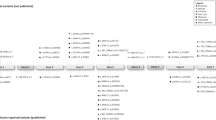Abstract
Morphological aspects of the neuronal ceroid lipofuscinoses (NCL) encompass two main features: loss of nerve cells and accumulation of autofluorescent lipopigments within cellular compartments. The former requires histology and morphometry for assessment, while the latter necessitates fluorescence microscopy, electron microscopy, and immunohistochemistry. Accumulation of lipopigments is widespread throughout the central nervous system and extracerebrally. The latter feature enables diagnosis of NCL and its clinical subtype. Loss of neurons is most pronounced in cerebral and cerebellar cortices, in early childhood forms. In subcortical grey matter and in later-onset forms, juvenile and adult NCL, reduction in neurons and possible preceding dendritic pathology may only correctly be ascertained by age-matched, controlled morphometric investigations which, to date, have not yet completely assessed subcortical neuronal damage. Presently, clinical and morphological evaluations are mandatory for genetic analysis, genetic counselling, and prenatal diagnosis, the latter often being based on combined genetic and morphological studies.
Similar content being viewed by others
Author information
Authors and Affiliations
Rights and permissions
About this article
Cite this article
Goebel, H. Morphological aspects of the neuronal ceroid lipofuscinoses. Neurol Sci 21 (Suppl 1), S27–S33 (2000). https://doi.org/10.1007/s100720070037
Issue Date:
DOI: https://doi.org/10.1007/s100720070037




